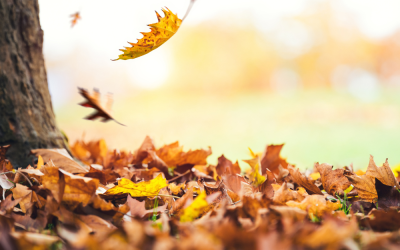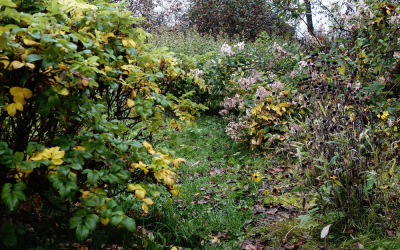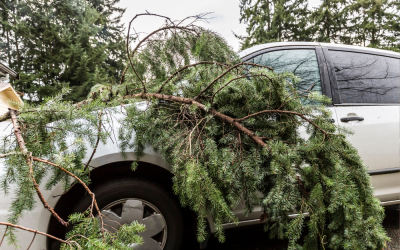The rowan tree (Sorbus aucuparia) are deciduous trees or shrubs found in the genus Sorbus of the rose family, Rosaceae. Although the silver-coloured, smooth bark of rowans appears similar to ash (Fraxinus excelsior) or elder (Sambucus nigra) trees, rowans are identifiable by their pinnate (serrated, pointed and feathery) foliage.
Rowans are native to the cooler climes of the Northern Hemisphere and can be found in many locations around the world – with the most variety of apolmictic species of rowan growing in the Himalya, Southern Tibet and areas of West China.
The Growth Cycle Of Rowan Trees
In winter, young twigs gain a layer of down-like fur to insulate developing buds against the cold. Terminal buds (those on the ends of shoots) can grow up to 8mm long, while lateral buds (found in the leaf axils) can develop 5-8 individual, oval-toothed leaflets with a single terminal “leaflet” at the end – and each leaf has between 2 and 5 scales.
In springtime, Rowans develop dense clusters of blossoms with five white petals each, which become scarlet, berry-like fruit in autumn after pollination by insects. This species of tree is hermaphrodite, meaning that each flower contains both female and male reproductive parts.
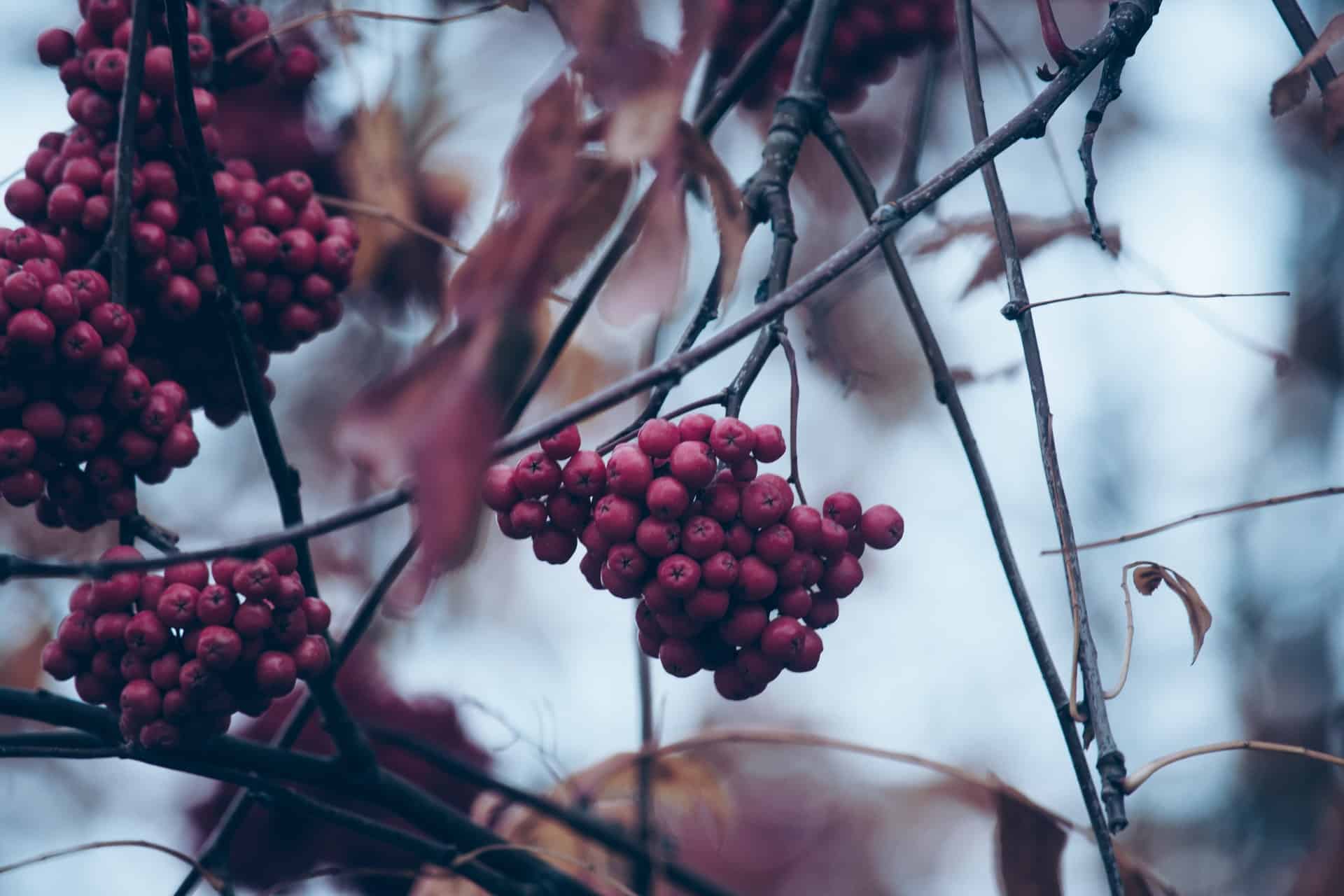
Historical Rowans
Rowans as a species have a long magical history with their roots deep in Greek, Norse and Celtic culture. The trees themselves are equally ancient: they can live for up to 200 years and grow up to 15 metres.
Ancient Greece: Demons and Eagles
In Ancient Greece it was believed that when Hebe (goddess of youth) lost her magical goblet (used to supply ambrosia to the gods), an eagle was sent to retrieve it. In the ensuing battle, blood and feathers were shed – which is why the rowan has feathery leaves and red berries.
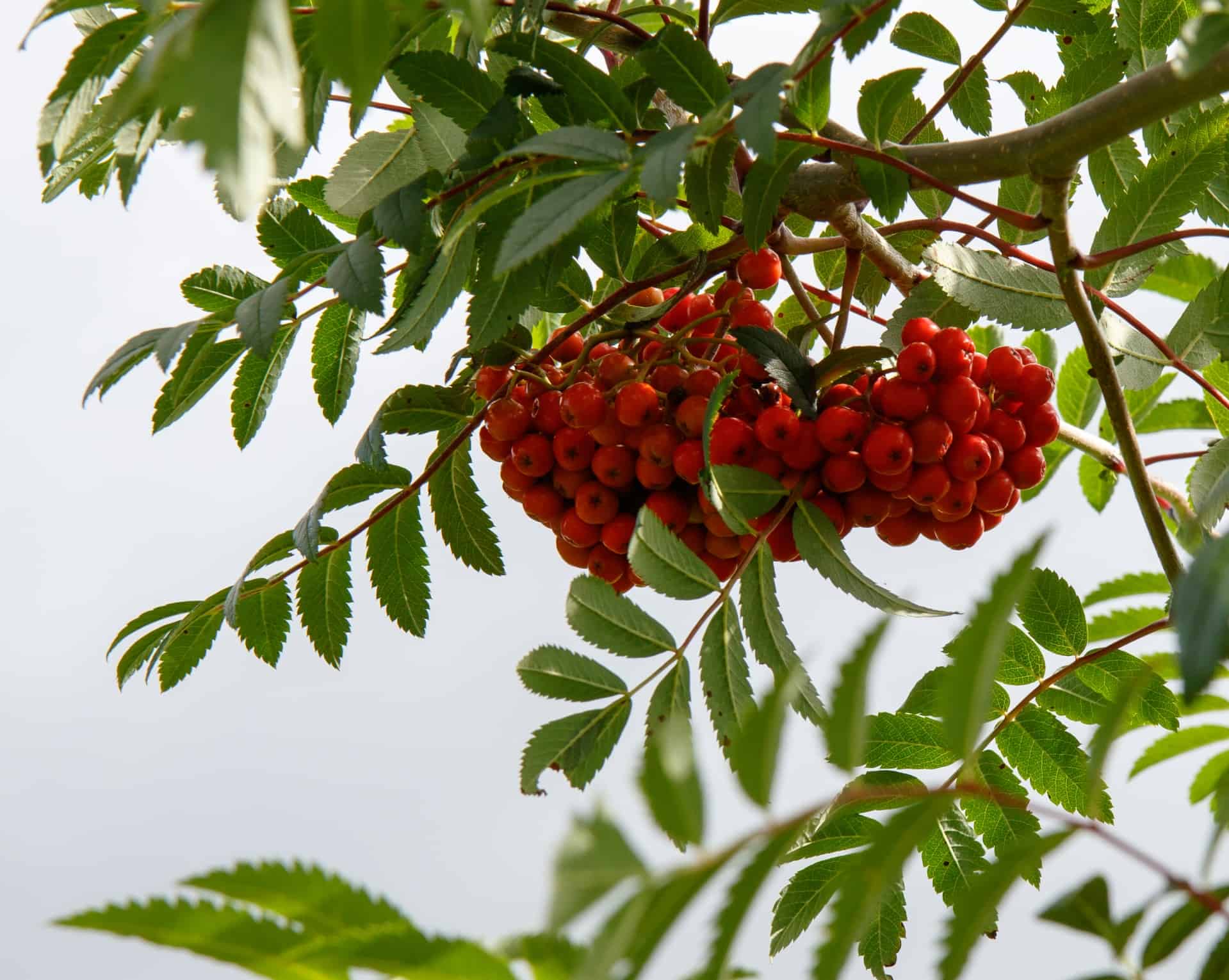
Norse Mythology: The Tale Of The First Woman
According to Norse (or Scandinavian) mythology, the first ever man was created from an ash tree – while the first woman was made from a rowan – who saved the god Thor from a fast flowing river deep in the Underworld.
Scandinavians also believed that the higher rowan trees grew, the more magical they were, calling these intrepid trees “flying rowans”, and often using their wood to create runes – tablets inscribed with symbols and used as magical charms.
Celtic Culture: Magical Rowans
The roots of the rowan can be found deep within Celtic culture, with many believing that to cut one down was taboo. Prior to the 7th Century, Paganism (a term initially used by Christians to describe any polytheistic, non-Judaistic religion) was common amongst Celtic cultures – and even throughout England.
To nature-worshipping Pagans, the stalks of rowan berries were thought to look similar to the pentacle, in Pagan (or Wiccan) culture a symbol of the four elements with a fifth – the spirit or self.
As Christianity spread throughout the Middle Ages so did suspicion surrounding Pagan culture. To ward off the evil spirits, people wore sprigs of Rowan and tucked them into fences near livestock – perhaps not knowing their associations with “heathen” folk.
The Tree Of Life – And Death
Like the Scandinavians, ancient Celts believed that rowans growing at higher altitudes were more magical, as they were thought to be closer to heaven. Although the Norse tree of life Yggdrasgil was thought to be an ash, it’s Celtic counterpart was the rowan.
This sacred symbol was worn as a clan badge in ancient Scotland by the Malcolms and Mclachlans, and is still often worn on jewellery as a symbol of the delicate yet determined nature of life.
Rowans could also symbolise death, too: in Wales the tradition was to plant them in cemeteries, while in Ireland and Scotland, the names of the deceased were often carved into rowan bark – there is even a Scottish folk song describing this:
“On thy fair stem were mony names
Which now nae mair I see
But they’re engraven on my heart,
Forget they ne’er can be
Oh, Rowan tree.”
A Tree By Any Other Name…
Throughout history Rowans have variously been called caorunn (pronounced choroon, the ‘ch’ as in loch) or Luis (in Gaelic), as well as the mountain ash, curin, kerin, and the “witch wiggin tree”.
The name Rowan itself also came into use throughout England and Ireland as a traditionally masculine baby name (although recently it has also become more unisex). The name is derived from the Irish-Gaelic word Ruadhán, meaning “red-haired” – possibly due to the scarlet hue of rowan berries.
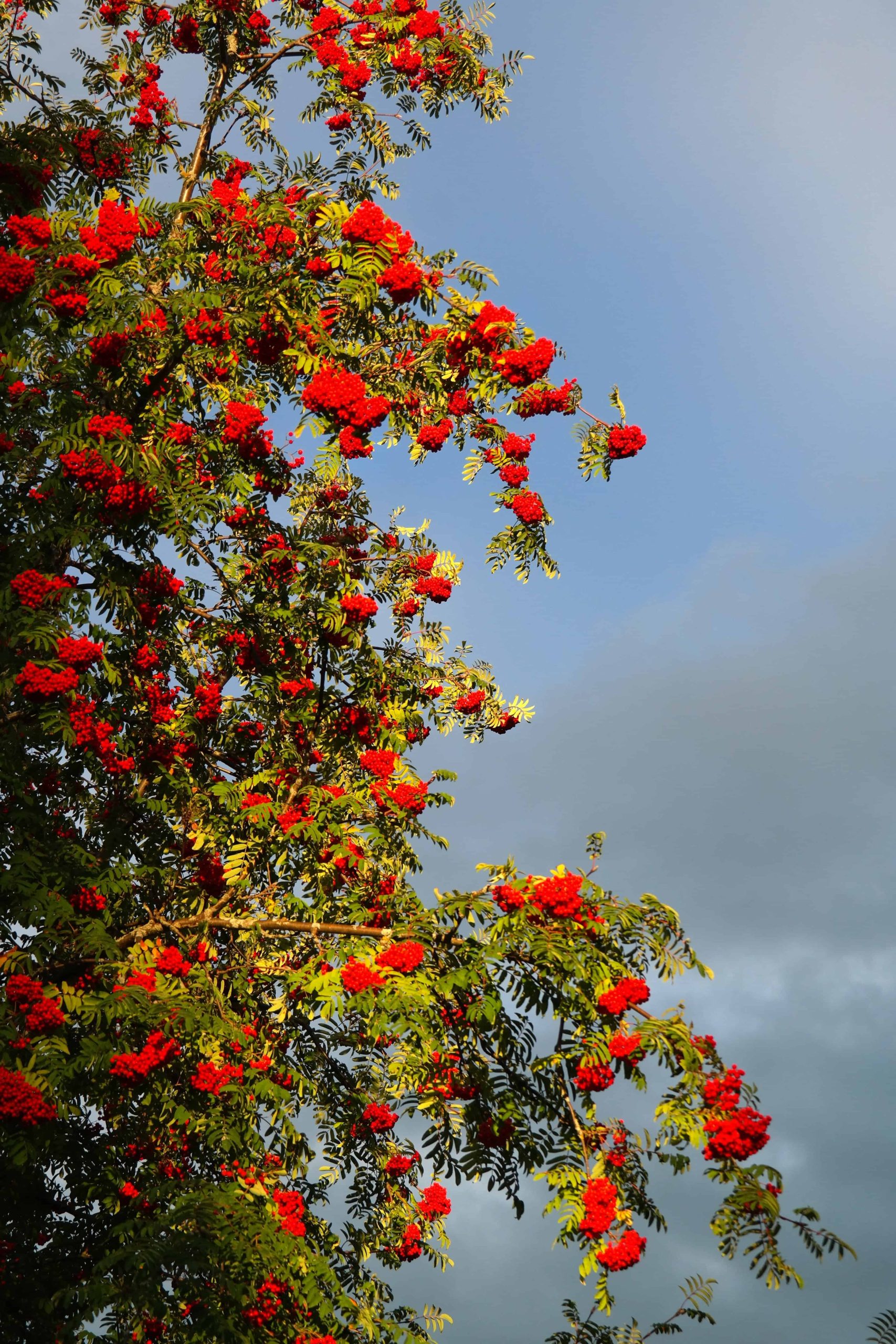
Edible, Useful Rowans
The rowan berry was once widely consumed throughout Europe and North America and is still used to make conserves and even wine – but without being certain of their origin, picking and eating rowan berries can be risky.
Not only do they look similar to poisonous berries, rowan berries should also not be eaten raw as they contain high levels of parasorbic acid, are laxative, diuretic and can cause an upset stomach, so if you’re unsure – it is best to avoid picking and eating them.
Rowan wood is resilient, making it ideal for use in construction, furniture and for making walking sticks. In ancient Druid culture, the bark was used to dye ceremonial robes brown or red – and in ancient Rome, it was also used to make spoons to stir dairy products, as the wood was thought to prevent curdling.
Trees are as much a part of our history as they are part of the landscape – so it’s important to care for them well. For advice and help with planting and maintaining trees, contact your local trained arborist or tree surgeon.

